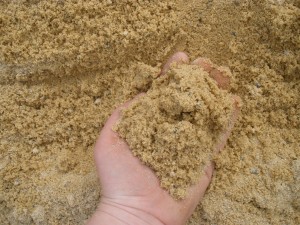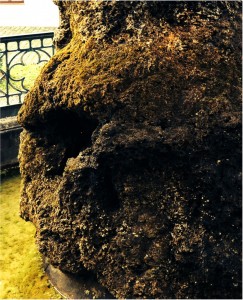Dear Kate,
I had been thinking intensively in our process, it is unbelievable how the structure of the piece changed during our investigation without loosing the core idea in the conversation of the materials. We were all the time asking for a dialogue between strength and softness. It appeared necessary to make bridges between the dichotomies, to have on one side something that changed in time without loosing it’s rigor and on the other, a flexible piece that will accommodate public interaction.
At the beginning we were looking for a base or pedestal that will let the visitor imprint the surface. The gesture of leaving a trace was certainly important. Remember? We thought of using a thermic material, which would allow the people to give other colour to that base by touching it. The costs and impossibility to drag around such material caused a vertiginous change in our pedestal. There is when the idea of the sand appeared. It is certainly a material that allows traces to be left, but also the use of sacks change the proposal into a more flexible possibility. For each town, we’ve accumulated sand sacks for the base incorporating, by doing so, a fragment disposition and versatility to the base.
We also thought on the solid part of the piece, that now is the rock. We wanted to record the different conversations and historical relations on its surface. We were aiming for a material that will really change, disappear or grow during the timeframe of the exhibition. During our research I came across a fantastic volcanic rock that is standing magnificent in one of the city gardens of Augsburg, it had a peculiarity, it was full of mosses, and it gave the sensation to be alive. I was impressed to feel the same when we selected our rock. I am happy that we let the rock to show its scars instead of recording new layers of information; we let the history of the rock talk by itself and by doing so, we were asked to use the aesthetic of the palimpsest somewhere else. I think that the aesthetic solution of printing the sacks with our palimpsests of information was key and very successful, also because it changed the materiality of the piece by introducing the necessity of a fabric.


